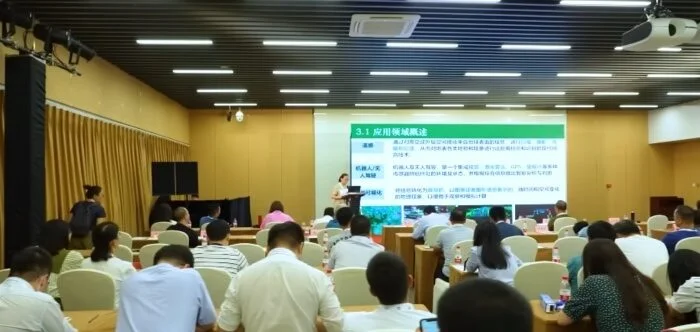Review papers, known for their comprehensive summaries and analyses of existing research in a particular field, play a crucial role in academic discourse. A common question that emerges among scholars is, “Can you present a review paper at a conference?”
Yes, you can. Conferences often welcome review papers, provided they align with the conference’s submission and presentation norms and offer meaningful insights into the field.
Such papers can illuminate trends, identify gaps, and set the stage for future research. If you’re interested in exploring how to craft and present a review paper at a conference effectively, stay with us as we dive-in deeper into this topic in the following sections of our article.
What are Review Papers?
Review papers serve as a cornerstone in academic research, offering a synthesized overview of existing literature on a specific topic. They are not just summaries but critical evaluations, bringing together various studies to form a coherent narrative. In essence, they provide a bird’s-eye view of the research landscape.

In their structure, review papers highlight trends, identify gaps in the research, and suggest future directions that are submitted to academic conferences on arts and education. They are invaluable for researchers new to a field, offering a consolidated understanding of prior work. By integrating diverse studies, review papers facilitate a deeper comprehension of the subject, helping scholars to build upon existing knowledge.
Can You Present a Review Paper at a Conference?
Yes, absolutely; presenting a review paper at a conference is not only possible but also often encouraged. With their comprehensive analyses of existing research, these papers can provide significant value to academic gatherings. They offer attendees a broad understanding of a specific field or topic.
Conference Guidelines
Every conference has its own set of rules for submissions. Review papers must adhere to these guidelines to be considered. This includes formatting, length, and the overall scope of content. Ensure your paper aligns with these criteria for a successful submission.
Relevance and Insight
Your review paper should offer relevance to the conference theme and provide insightful analyses. It must synthesize existing research in a way that adds value to the conference. Papers that offer unique perspectives or identify new trends are more likely to be accepted.
Originality and Contribution
While review papers summarize existing literature, they should also contribute original thoughts or perspectives. They must not merely repeat information but provide a new understanding or synthesis. This originality is key to being accepted for presentation.
Quality and Clarity
The quality of your writing and the clarity of your arguments are crucial. A well-written, clear, and concise review paper is more likely to be accepted. High standards of academic writing and effective communication of ideas are essential.
Audience Engagement
Engaging the audience is vital for a successful presentation. Your review paper should be structured to maintain interest and encourage dialogue. It should pose questions, challenge existing ideas, or suggest implications for future research. This engagement is critical for making a lasting impact at the conference.
Visual and Oral Presentation
Consider how you will present your paper. Effective visual aids, like slides or charts, can enhance understanding. Practicing your oral presentation skills is equally important for clarity and engagement. A well-prepared presentation can significantly enhance the impact of your review paper.
Networking and Collaboration Opportunities

In summary, presenting a review paper at a conference is not only possible but can be highly beneficial. By focusing on these key factors, your paper can make a significant contribution to the academic community.
Why Should You Present Your Review Paper at a Conference?
Presenting a review paper at a conference is more than just sharing research; it’s a gateway to new opportunities and insights. These presentations allow for the dissemination of comprehensive knowledge and critical evaluations of a field. They can shape future research directions and spark collaborations.
Broadening Research Impact
Presenting at a conference amplifies the reach of your work. It exposes your review paper to a wider audience, extending beyond journal readership. This exposure can lead to citations and recognition in your field. It also enhances the paper’s impact by engaging with a live audience.
Networking and Collaboration
Conferences are hotbeds for networking. Presenting your paper puts you in the spotlight, attracting potential collaborators and mentors. These connections can lead to joint research projects and academic partnerships. Networking at these events often shapes future research directions and opportunities.
Feedback and Improvement
Presentations provide immediate feedback from peers. This input is invaluable for refining your arguments and understanding. Questions and discussions post-presentation can reveal overlooked aspects or new perspectives. This feedback loop is crucial for academic growth and improvement of your work.
Professional Development
Presenting a review paper is a skill-building exercise. It enhances your communication and public speaking skills. Handling questions and engaging with an audience sharpens critical thinking. These experiences are vital for professional growth in academia.
Presenting a review paper at a conference is a multifaceted opportunity. It not only broadens the impact of your research but also fosters professional development, encourages collaborations, and provides a platform for valuable feedback. These experiences are instrumental in shaping a successful academic career.
How to Present Your Review Paper at a Conference?
A review paper presentation at a conference requires meticulous preparation and strategic execution. This process involves understanding your content deeply and knowing how to effectively communicate it to an academic audience. Here’s a step-by-step guide to ensure your presentation is impactful and memorable:
Step 1: Understand Conference Requirements
First, familiarize yourself with the conference’s format and guidelines. Know the time allocated for your presentation and any specific requirements like slide formats or technical setups. Adhering to these guidelines is crucial for a smooth presentation.
Step 2: Prepare Your Presentation
Craft a clear, concise, and engaging presentation. Start with a compelling introduction, followed by the main findings of your review, and conclude with implications or questions for discussion. Use visuals wisely to aid in explaining complex ideas more effectively.
Step 3: Rehearse Your Delivery
Practice your presentation multiple times. Focus on clear articulation, maintaining an engaging tone, and timing your speech to fit the allotted slot. Rehearsing helps smooth out transitions and refine your message.
Step 4: Engage With Your Audience
During the presentation, engage with your audience. Make eye contact, respond to their reactions, and invite questions. This interaction makes your presentation more dynamic and memorable.
Step 5: Handle Questions Confidently
Be prepared for questions and comments. Listen carefully and respond thoughtfully. Handling questions well shows your depth of knowledge and ability to think critically.
Step 6: Network and Follow-up
Use this opportunity to network with other attendees. Exchange contacts for future collaborations or discussions. Following up with new connections can lead to fruitful academic partnerships.
In summary, presenting a review paper at a conference is a rewarding experience that requires careful preparation, effective communication, and audience engagement. By following these steps, you can ensure your presentation is well-received and leaves a lasting impact on your academic peers.
Considerations While Presenting Your Paper at a Conference
The presentation of a paper at a conference is a significant milestone for any researcher. You will be able to showcase your work and engage with the academic community. However, it’s essential to keep in mind several key considerations to ensure the presentation is effective and well-received.
- Audience Understanding: Tailor your presentation to the audience’s expertise level. Avoid overly technical language if the audience is diverse in their knowledge base.
- Clarity of Message: Ensure your main points are clear and concise. A well-structured presentation helps the audience grasp your research’s significance.
- Visual Aids: Use slides and other visual aids judiciously. They should complement, not overshadow, your spoken words.
- Time Management: Adhere strictly to the allotted time for your presentation. Practicing beforehand helps in timing your talk effectively.
- Engagement Techniques: Engage your audience with questions or interactive elements. This keeps the presentation dynamic and maintains interest.
- Handling Questions: Prepare for potential questions and answer them confidently. Thoughtful responses reflect your expertise and understanding of the topic.
- Body Language: Be mindful of your body language. Positive and open body language can enhance your communication and audience engagement.
Presentations at conferences require you to consider factors like audience understanding, clarity, visual aids, and time management. Engaging presentation techniques, confident handling of questions, and effective use of body language will significantly enhance the impact of your presentation, leaving a lasting impression on your academic peers.
Tips to Select the Right Conference For Presenting Your Review Paper
Selecting the right conference for presenting your review paper is a pivotal step in your academic journey. It determines the audience, the impact, and the future collaborations your work will attract. Here are some essential tips to guide you in making this important decision.
- Research the conference’s focus and themes to ensure alignment with your paper’s topic. Relevant conferences will attract an audience interested in your research area.
- Investigate the conference’s reputation and past proceedings to gauge its prestige and academic rigor. High-quality conferences enhance the credibility of your work.
- Consider the networking opportunities the conference offers, especially with key figures in your field. Good networking can lead to valuable collaborations and insights.
- Look into the geographical location and audience demographics to maximize your paper’s impact. Diverse, international conferences can broaden your research’s reach.
- Check for the conference’s publication opportunities, such as associated journals or proceedings. Publication in respected outlets increases your work’s visibility.
- Assess the conference format, whether it’s virtual or in-person, to match your presentation style. Comfort with the format ensures a more effective presentation.
Choosing the right conference for presenting your review paper is a strategic decision that can significantly influence your academic profile. By considering these tips, you can find a platform that not only showcases your work effectively but also enriches your professional experience and growth.
Final Brief
To sum it up, presenting a review paper at a conference is not only an option but an excellent opportunity for academic growth and recognition. Review papers, with their synthesis of existing research, offer a unique perspective that enriches academic discourse.
When asking, “Can you present a review paper at a conference?” the answer is a resounding yes, provided the paper aligns with the conference’s guidelines and offers insightful, original contributions. The process involves selecting the right conference, preparing and delivering an engaging presentation, and effectively networking for future collaborations.
Each step, from understanding conference requirements to handling audience questions, plays a critical role in the success of your presentation. The consequences of overlooking these aspects can range from missed opportunities to diminished impact. Therefore, careful preparation and adherence to guidelines are essential for a rewarding conference experience and the fruitful dissemination of your review paper.






